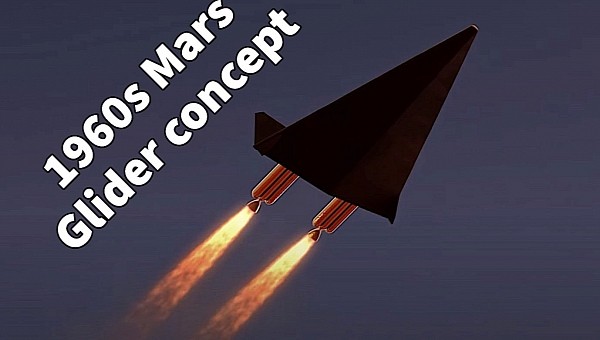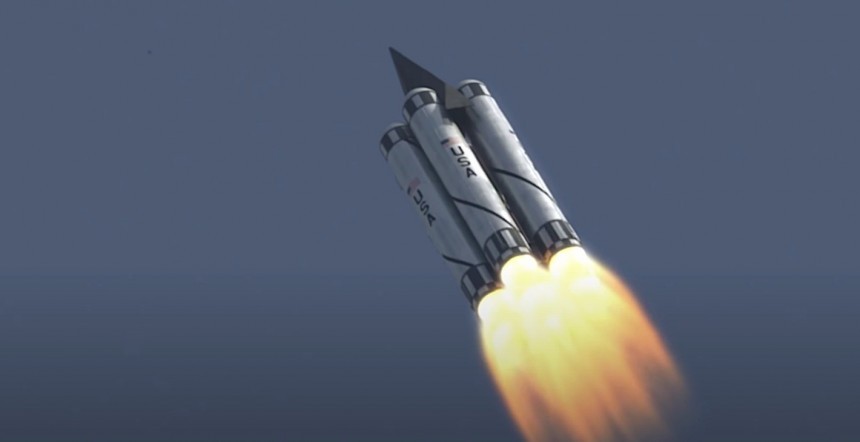The 1960s were incredible years. With the threat of nuclear annihilation a constant presence in their everyday lives, humans still managed to create incredible things and bring daring ideas to life, literally opening up the heavens for our species. But for every piece of hardware and machine imagined, the 1960s were filled with even crazier ideas that never came to pass.
That’s more than obvious in the space industry, a domain of human activity filled with rocket concepts that failed to make it into the real world, the ideas behind some of which have been revived and are in use today.
Back then, a lot of companies and people were working on developing space exploration hardware, but few names are as important for the industry as a guy named Philip Bono. An engineer with Boeing and the Douglas Aircraft Company, he had this thing about reusable rockets (ring any bells, SpaceX?) and was responsible over the years for concepts like the Reusable One-stage Orbital Space Truck (ROOST), the Saturn Application Single Stage to Orbit (SASSTO), the Reusable Orbital Module, or the Utility Shuttle (ROMBUS).
None of these wacky ideas were ever made, but modern technology and a talented hand at digital animations brought many of them to life over the past few years, giving us a taste of what our world might have looked like with these rockets in it. The talented hands we mentioned belong to someone going by the name Hazegrayart on YouTube, and his latest video brings to life another of Bono’s ideas, the so-called Mars Glider.
The idea was born in 1960, one year before Yuri Gagarin became the first man to travel to space. It was known back then as the American manned Mars expedition study, and was intended as a vehicle capable of taking humans to the Red Planet.
The idea comprised a main spacecraft (a delta-wing glider, hence the contraption’s name) capable of carrying a crew of eight people (quite a large number), but also almost 40 tons of supplies and equipment needed to survive on Mars.
The spacecraft was to be strapped to seven boosters burning liquid oxygen and liquid hydrogen. To our knowledge, no spacecraft ever built had so many boosters on, but the Glider needed them to achieve the correct Mars trajectory. They also made the rocket so massive, at least in terms of diameter, it could seem like some sort of building shooting off into space: 82 feet (25 meters, almost as large as the Artemis Space Launch System rocket) in diameter.
The rocket also had a core stage that would stay attached to the spacecraft for the duration of the trip to Mars, making the entire assembly look like some kind of arrow shot into the heavens.
The Hazegrayart video below shows the entire trip of the Mars Glider to Mars, and the start of the return home, in just 8 minutes of footage. Unlike other of Bono’s spacecraft ideas, this one was also accompanied by a full mission profile to Mars. Stay tuned this weekend as we’ll dive really deep into the Mars mission from decades ago that never came to pass.
Back then, a lot of companies and people were working on developing space exploration hardware, but few names are as important for the industry as a guy named Philip Bono. An engineer with Boeing and the Douglas Aircraft Company, he had this thing about reusable rockets (ring any bells, SpaceX?) and was responsible over the years for concepts like the Reusable One-stage Orbital Space Truck (ROOST), the Saturn Application Single Stage to Orbit (SASSTO), the Reusable Orbital Module, or the Utility Shuttle (ROMBUS).
None of these wacky ideas were ever made, but modern technology and a talented hand at digital animations brought many of them to life over the past few years, giving us a taste of what our world might have looked like with these rockets in it. The talented hands we mentioned belong to someone going by the name Hazegrayart on YouTube, and his latest video brings to life another of Bono’s ideas, the so-called Mars Glider.
The idea was born in 1960, one year before Yuri Gagarin became the first man to travel to space. It was known back then as the American manned Mars expedition study, and was intended as a vehicle capable of taking humans to the Red Planet.
The spacecraft was to be strapped to seven boosters burning liquid oxygen and liquid hydrogen. To our knowledge, no spacecraft ever built had so many boosters on, but the Glider needed them to achieve the correct Mars trajectory. They also made the rocket so massive, at least in terms of diameter, it could seem like some sort of building shooting off into space: 82 feet (25 meters, almost as large as the Artemis Space Launch System rocket) in diameter.
The rocket also had a core stage that would stay attached to the spacecraft for the duration of the trip to Mars, making the entire assembly look like some kind of arrow shot into the heavens.
The Hazegrayart video below shows the entire trip of the Mars Glider to Mars, and the start of the return home, in just 8 minutes of footage. Unlike other of Bono’s spacecraft ideas, this one was also accompanied by a full mission profile to Mars. Stay tuned this weekend as we’ll dive really deep into the Mars mission from decades ago that never came to pass.













